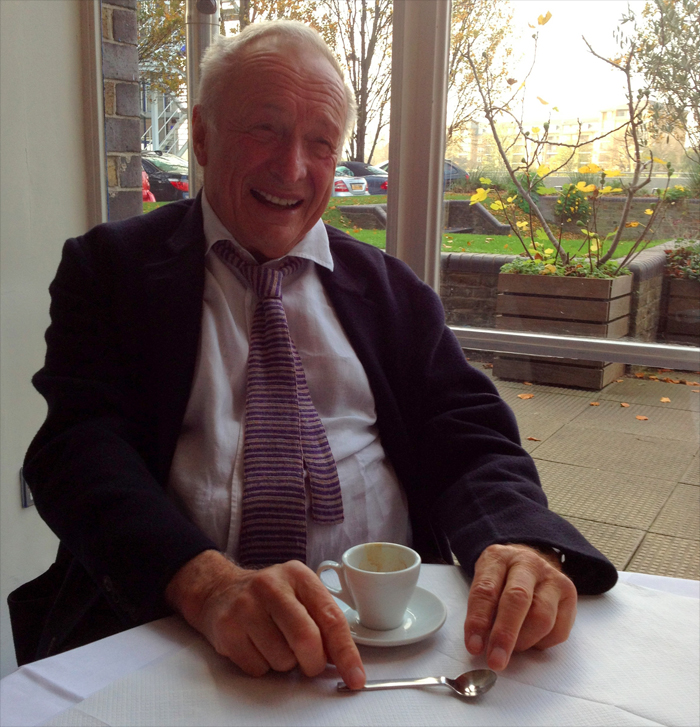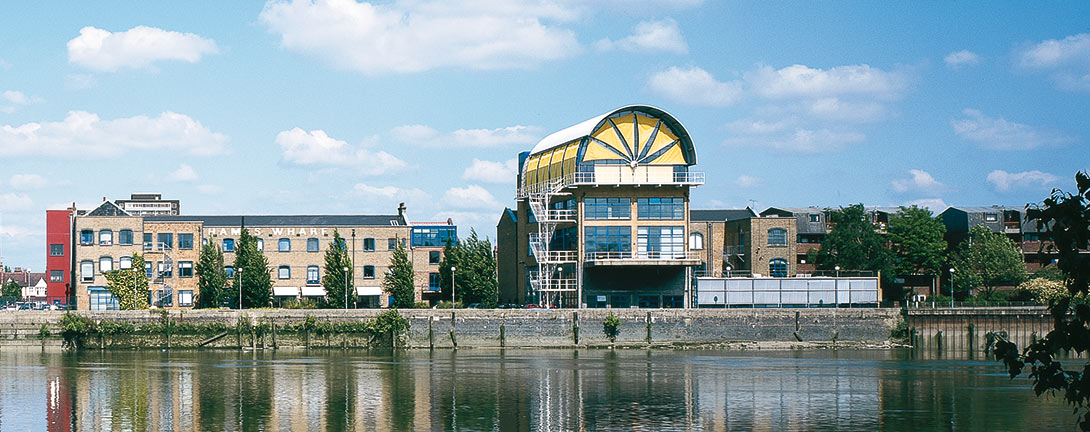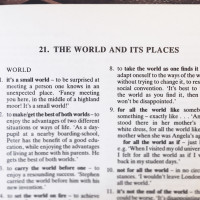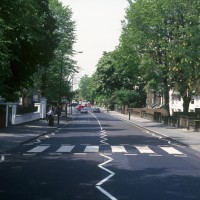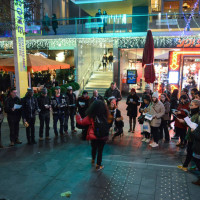
The River Café
Thames Wharf, Rainville Road, Borough of Hammersmith and Fulham, London
video by Elena M. Wagner
The British Architect and Lord of Riverside Richard Rogers immediately accepted to answer our question: What’s Your “One Place”? So he has been the first Architect interviewed by CCT for this “One Place” Project, a simple format but also special. We could never have imagined to start with such a great architect and urbanist, noted in the world for his modernist and functionalist designs. He is the 2007 Pritzker Architecture Prize Laureate (like Nobel Prize for Architects) and among his most famous works are the Pompidou Centre (co-designed with the Italian Architect Renzo Piano) in Paris, the Lloyd’s building and Millennium Dome both in London, and the European Court of Human Rights building in Strasbourg. Moreover, Richard Rogers was chosen to design Tower 3 at 175 Greenwich Street, World Trade Center, New York.
CCT met Richard Rogers on the 15th November 2011 at The River Café (Thames Wharf, Hammersmith, London). We got a very nice espresso together and then he told us his “place” which is exactly where we were… We couldn’t wish to have a more special contribution for our first “One Place” video interview. It was an unforgettable espresso, it was an amazing honour. And he was so generous he didn’t tell us just one place. Indeed, he told us three places he loves. Here below you can discover which are.
London, Tuesday 15th November 2011
I’m going to choose three places. Let’s start from where we are now, which is The River Cafè and the small square that we have created outside our offices. A public space, though owned privately, everybody walks through this space: it creates a community, it strengthens the community. We the architects Rogers, Stirks and Harbour occupy about a third of the space, the river, currently, about 15% and the rest are design offices. We meet here. We think food is very important as a catalyst towards getting together. The famous phrase I like very much about it is that it encapsulates public space, which is only connect, connectability, very important word. This is what we are doing here by the way, connectability, changing ideas. So, this is in a way the heart – the public space, the heart of this area and it’s part of the whole concept of our offices, about having a social responsibility of giving our private space to the public, to public causes. We are also very fortunate, in that not only do we have one of the best Italian restaurants, but we also have a wonderful river on the other side. So it’s a very nicely positioned place. It’s a home for all of us. That’s one.
The second one is the walk along the south bank of the Thames. From the Royal Festival Hall, which is opposite the Houses of Parliament, all the way down to the docks, a few kilometres. It’s a “new walk”, it used to be part of the London that was all industrial: nobody used to go there, because it was a dangerous area but in the last ten years it has become the most popular area of London. That is not only because it is a beautiful walk, because you can go all the way down and you can see very good views of all of London, especially on the north side, but also the fact that you have spontaneous parties: you have Brazilian parties, you have Spanish parties, you have whatever, all the time, every weekend – and it has become the link; and the wealth of London in the last few years has been an amazing mixture of different people who have arrived here with their cultures and that has enriched London – especially London – and made it a much more international city. So I love this and it is very informal. There are some good buildings but it is not made purely by the buildings, it is made by a linear passeggiata.
The third place is much more formal, very classical. St. James Park – which is actually the most beautiful park, very well kept – it is situated between Whitehall, which has got all the government and parliament on one side and then you have the government buildings and Buckingham Palace. There’s a lake inside it, and if you stand on the bridge, on this lake, looking towards the east, you have a most beautiful view of the palace – the house entirely, a 16th/17th century building; and at the back there is a big wheel (called London Eye) that was built about ten years ago (it was opened in 2000) which gives you a view of London so that you can have a different view from the end of the 13th century to the beginning of the 16th century: a mixture of buildings in a very formal place, with the most beautiful water and gardens in the world.
[CCT thanks Richard Rogers for his unforgettable kindness and this precious contribution to our project “One Place”. CCT also thanks Sofia Gargani for her special intermediation, Elena M. Wagner for the videos and the editing of the full article, Eleonora Monzali for the below photogallery, Paulo Genovez and David Nelson for transliteration and correction.]
WHO: The British Architect and Lord of Riverside Richard Rogers from London. He was born in Firenze (Florence, Italy) on July 23, in 1933, of Anglo-Italian parents.
WHERE: The River Café is a restaurant in the Borough of Hammersmith and Fulham (London) specializing in Italian cuisine. It is owned and run by chef Ruth Rogers and until early 2010, Rose Gray. Located on the north bank of the Thames in Hammersmith (nearest railway station is Hammersmith tube station), in the former Duckhams oil storage facility modified by architect Lord Rogers, the husband of Ruth Rogers (Lady Rogers). Opened in 1987 as the employee café of the architectural partnership, there is a garden with views of the River Thames. / Rogers Stirk Harbour + Partners – Thames Wharf Studios: the site at Thames Wharf, Hammersmith, was acquired by Richard Rogers Partnership in 1983 as the location for the practice’s new offices. Formerly a redundant industrial complex, including a group of early 20th-century warehouses, the site sits along the bank of the River Thames. The site was developed as practice offices, lettable workshops and office units (within the refurbished warehouse blocks) and new housing. The lettable offices are largely occupied by architects and design-related professionals. The principle intervention within the RRP office block is a double-height entrance lobby. Over the years it has developed as an informal gallery where project models are exhibited on steel racks. Throughout the building new elements are expressed in a bold industrial manner, using primary colours. A key element in the regeneration of the site is the River Café, opened in 1987. The Café looks out over a landscaped area that extends to the newly created river walkway. A sizeable area of public space was laid out where there had been no previous public access. The spectacular two-storey rooftop extension for the RRP office space is by Lifschutz Davidson, a practice that has offices within the Thames Wharf complex. Designed in association with RRP and completed in 1991, the extension’s great semi-circular roof provides a lightweight expression of the activities carried out below. – (Thames Wharf, Rainville Road, Borough of Hammersmith and Fulham, London).
RYB (abbreviation of red–yellow–blue) is one commonly used set of primary colors. Rogers Stirk Harbour + Partners building, both outside and inside, is characterized by primary colors, especially these three. Parts of the roof, pipes, doors, staircases as well as some small objects and details are yellow, red or blue. For example, the coffee machine’s paper cups are blue like the windows and other things. (But even secondary colors like green and orange or mixed colors like pink are welcome; what matter is the intensity). And it’s amazing how the architects and other people who work here seem to dress in harmony with the environment. First of all Richard Rogers who usually wears only colored sweaters. The day we filmed the video above he was wearing a jacket and tie – formal, quite classical – as he was going to a meeting in the House of Lords. Otherwise, I’m pretty sure he would have dressed some bright colors even that day.
 from “London as it could be” by Richard Rogers
from “London as it could be” by Richard Rogers
*
On the way to Richard Rogers’s Studios…
video by Elena M. Wagner
This is a WPSimpleViewerGallery
This is a WPSimpleViewerGallery
photogallery by Eleonora Monzali


